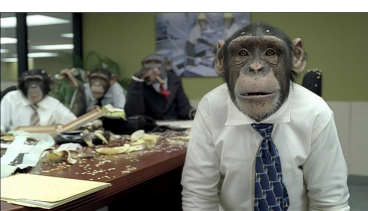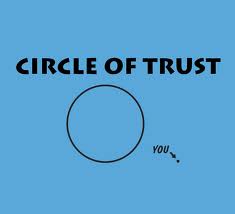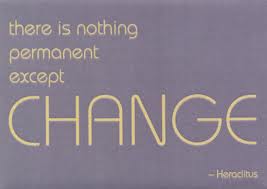 As most of you know, I’ve been traveling A LOT lately and I haven’t had the opportunity to watch a lot of television. However, it seems like every time I have the TV turned on, I’m seeing a television commercial from General Electric (GE) that talks about “ideas”.
As most of you know, I’ve been traveling A LOT lately and I haven’t had the opportunity to watch a lot of television. However, it seems like every time I have the TV turned on, I’m seeing a television commercial from General Electric (GE) that talks about “ideas”.
Have you ever experienced a commercial that grabs you in such a way that you can’t get it out of your head? If so, then you know what I’ve been experiencing for the last month. There is something about this commercial that just speaks truth to me.
If you receive this blog via an email subscription, then click this link to view the “Ideas Are Scary” commercial. If you are viewing this in your browser, then you can click the video image below:
https://www.youtube.com/watch?v=sfmQvc6tB1o
I think this television commercial speaks to me because I routinely see this play out live and in-person as a non-profit consultant. The following are just a few examples:
- Strategic planning discussions where ideas are shot down for any number of reasons ranging from lack of resources to lack of leadership
- Annual campaign planning meetings where volunteers express resistance to sitting down with donors in-person to talk about making a pledge to the campaign (typically rooted in fear)
- Boardroom discussions where investing in organizational capacity building efforts is met with resistance because it means getting outside of an organizational comfort zone
And if this is a common theme in my life, then I know it something with which many non-profit CEOs and fundraising professionals constantly are confronted.
So, today’s post begs the question . . .
What should non-profit leaders do differently to make ideas less scary and improve their ability to lead change?
There has been a fair amount of writing over the last five years on the DonorDreams blog platform by me and number of guest bloggers on the subject of leading change, and the following are a few of my favorites:
- Embrace storytelling as a catalyst for organizational change
- Can’t change your non-profit ways? That’s just BS!
- How to avoid groupthink in your non-profit boardroom
- Change 101: Sell-Sell-Sell and then Strategy-Strategy-Strategy
However, I am left with two questions:
- How can non-profit leaders build an organizational culture that embraces new ideas, creativity and innovation?
- How can non-profit leaders build shared vision among all stakeholders (e.g. staff, board, donors, etc)?
I know the answer to both of these questions includes parts and pieces of the following:
- writing and refining a powerful “case for support” document
- getting the right people sitting around the table
- engaging everyone in the process, hearing their concerns and incorporating their thoughts until everyone has an ownership stake in the idea
 However, there is much, much more to leading change than the simple six step model that some organizational development consulting/training companies teach, and I suspect it has something to do with your organization’s culture. This is where I think all of us can learn from The Walt Disney Company, home of “Imagineering”. (Note: this term is trademarked by Disney)
However, there is much, much more to leading change than the simple six step model that some organizational development consulting/training companies teach, and I suspect it has something to do with your organization’s culture. This is where I think all of us can learn from The Walt Disney Company, home of “Imagineering”. (Note: this term is trademarked by Disney)
I always thought Imagineering was a just an idea the folks at Disney embraced and knit into their corporate culture. However, after a little wiki research, I’ve learned this is a full-blown organizational development concept rooted in:
- org structure
- processes-procedures-systems
- people
- direction setting
If you are a frustrated non-profit leader (either paid staff or volunteer) and want to figure out how to make ideas less scary and more likely to be embraced, my suggestion is to research what works for General Electric (aka the people who “Bring Good Things to Life” and espouse “Imagination at Work”) and The Walt Disney Company (aka home of the imagineer).
You might be surprised by the number of best practices you find and how many you are able to implement at your non-profit organization.
In the meantime, please use the comment box below to share your thoughts and experiences on how you’ve tried to change organizational culture or build shared/common vision. We can all learn from each other.
Here’s to your health!
Erik Anderson
Founder & President, The Healthy Non-Profit LLC
www.thehealthynonprofit.com
erik@thehealthynonprofit.com
http://twitter.com/#!/eanderson847
http://www.facebook.com/eanderson847
http://www.linkedin.com/in/erikanderson847

 It is a basic truism for some organizational development professionals that “Culture trumps strategy“. In the last few months, this expression has been front and center in my mind. I guess the reason it bothers me is because of its implications, which is none of what I bring to the table as a non-profit and fundraising consultant matters unless the organization’s culture is ready to receive it and act upon it.
It is a basic truism for some organizational development professionals that “Culture trumps strategy“. In the last few months, this expression has been front and center in my mind. I guess the reason it bothers me is because of its implications, which is none of what I bring to the table as a non-profit and fundraising consultant matters unless the organization’s culture is ready to receive it and act upon it. I’ll stop Googling now. Because I think I get it now.
I’ll stop Googling now. Because I think I get it now. A CEO who had begun to practice his own form of “management-by-walking-around” learned from his employees that the company inhibited innovation by subjecting every new idea to more than 275 separate checks and sign-offs. He promptly appointed a task force to look at this situation, and it eliminated 200 of the obstacles. The result was a higher innovation rate.
A CEO who had begun to practice his own form of “management-by-walking-around” learned from his employees that the company inhibited innovation by subjecting every new idea to more than 275 separate checks and sign-offs. He promptly appointed a task force to look at this situation, and it eliminated 200 of the obstacles. The result was a higher innovation rate. Phenomenal!: “What assumptions am I making and what biases do I hold that are manifesting themselves in the culture of this organization, leading to an approval process with 275 signoffs and associates that are reticent to challenge that process?
Phenomenal!: “What assumptions am I making and what biases do I hold that are manifesting themselves in the culture of this organization, leading to an approval process with 275 signoffs and associates that are reticent to challenge that process?
 A long while ago, a great warrior faced a situation which made it necessary for him to make a decision which insured his success on the battlefield. He was about to send his armies against a powerful foe, whose men outnumbered his own. He loaded his soldiers into boats, sailed to the enemy’s country, unloaded soldiers and equipment, then gave the order to burn the ships that had carried them. Addressing his men before the first battle, he said, “You see the boats going up in smoke. That means that we cannot leave these shores alive unless we win! We now have no choice—we win, or we perish! They won.
A long while ago, a great warrior faced a situation which made it necessary for him to make a decision which insured his success on the battlefield. He was about to send his armies against a powerful foe, whose men outnumbered his own. He loaded his soldiers into boats, sailed to the enemy’s country, unloaded soldiers and equipment, then gave the order to burn the ships that had carried them. Addressing his men before the first battle, he said, “You see the boats going up in smoke. That means that we cannot leave these shores alive unless we win! We now have no choice—we win, or we perish! They won.
 One particularly hungry monkey eagerly scampered up the pole, intent on retrieving a banana. Just as he reached out to grasp the banana, he was hit with a torrent of cold water from an overhead shower. With a squeal, the monkey abandoned its quest and retreated down the pole.
One particularly hungry monkey eagerly scampered up the pole, intent on retrieving a banana. Just as he reached out to grasp the banana, he was hit with a torrent of cold water from an overhead shower. With a squeal, the monkey abandoned its quest and retreated down the pole.  We, like our monkey friends, become conditioned. Don’t climb that pole! we learn, when we see what happens to those that do … Then we teach don’t climb that pole! to the newcomers we welcome into the organization, telling the story of what happened to our ambitious co-worker Moe when he climbed that pole it was like a cold shower stopped him right in his tracks! … We learn that we don’t need to climb the pole; we are growing sales and driving profits without climbing the pole; it over time becomes an afterthought, except of course to orient the new talent; and there comes a time when a newbie asks“Why don’t we climb the pole?”and we’re all kind of stumped “dunno; it’s just the way we do things around here!”
We, like our monkey friends, become conditioned. Don’t climb that pole! we learn, when we see what happens to those that do … Then we teach don’t climb that pole! to the newcomers we welcome into the organization, telling the story of what happened to our ambitious co-worker Moe when he climbed that pole it was like a cold shower stopped him right in his tracks! … We learn that we don’t need to climb the pole; we are growing sales and driving profits without climbing the pole; it over time becomes an afterthought, except of course to orient the new talent; and there comes a time when a newbie asks“Why don’t we climb the pole?”and we’re all kind of stumped “dunno; it’s just the way we do things around here!”
 Welcome to O.D. Fridays at DonorDreams blog. For the last few years, we’ve looked at posts from John Greco’s blog called “
Welcome to O.D. Fridays at DonorDreams blog. For the last few years, we’ve looked at posts from John Greco’s blog called “ Here are just a few examples of what those situations looked like:
Here are just a few examples of what those situations looked like: The definition of the word “grace” according to a Google search is: “simple elegance or refinement of movement“.
The definition of the word “grace” according to a Google search is: “simple elegance or refinement of movement“.








